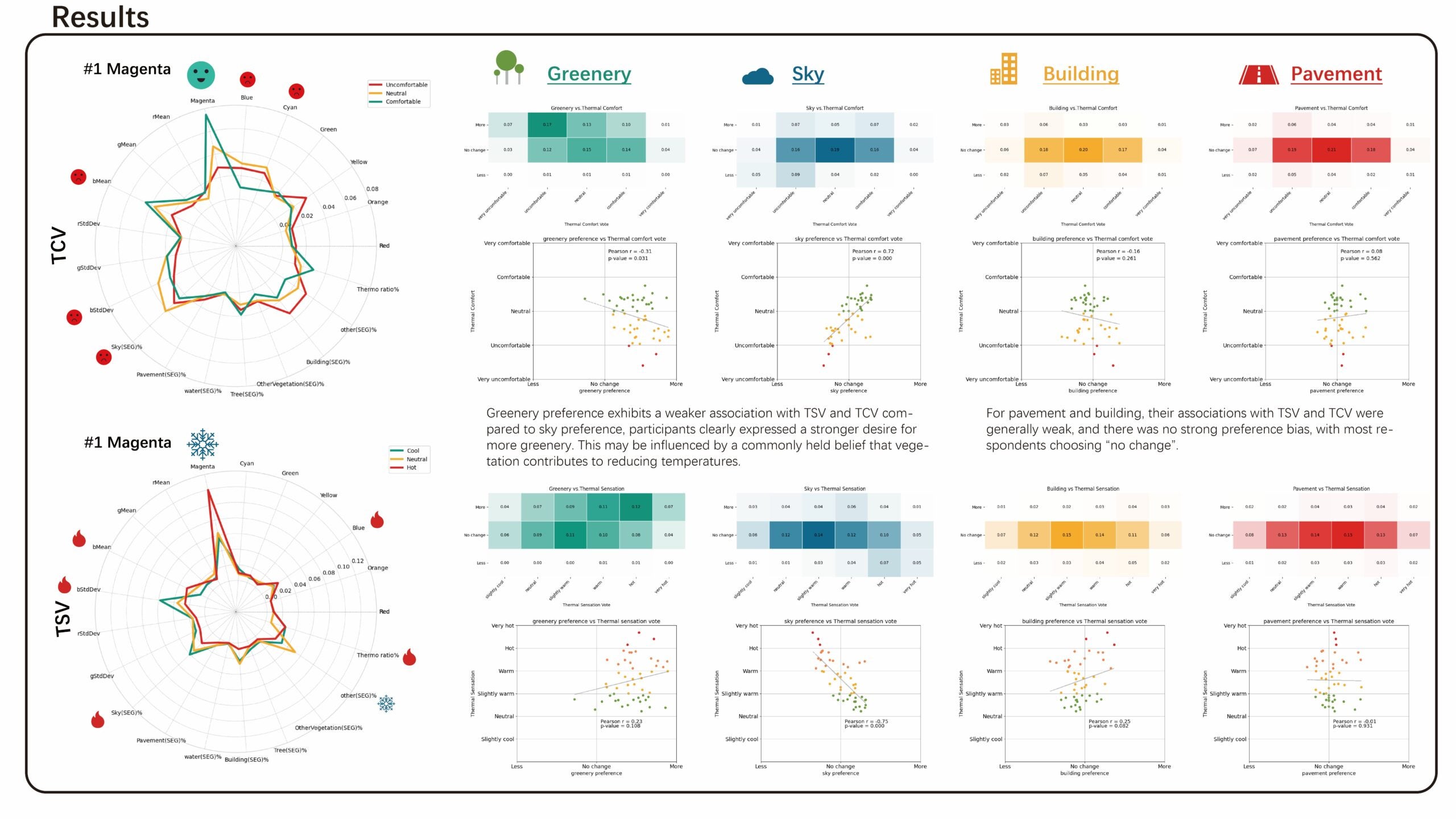Exploring the Impact of Visual Elements on Perceived Outdoor Thermal Comfort

Outdoor thermal comfort plays a crucial role in determining the quality of outdoor spaces. Research has led to the development of various heat indices, such as the Universal Thermal Climate Index (UTCI) and the Physiological Equivalent Temperature (PET). However, these indices do not fully capture the thermal comfort of a given location, as thermal perception varies depending on factors such as location, season, and population type, even under the same temperature conditions. Furthermore, studies have shown that thermal perception is influenced not only by environmental conditions but also by physiological factors. In addition, recent research has found that visual elements significantly affect outdoor thermal comfort.

This study adopts an approach that combines computer vision and thermal votes to explore the relationship between urban visual elements and thermal perception. By collecting votes from 317 students at the National University of Singapore, the study successfully trained a tree-based model to predict people’s thermal comfort level based on images. Using Shapley Additive Explanation (SHAP), the research further identifies how visual elements influence thermal perception, thereby providing insights for landscape architecture and urban design.

